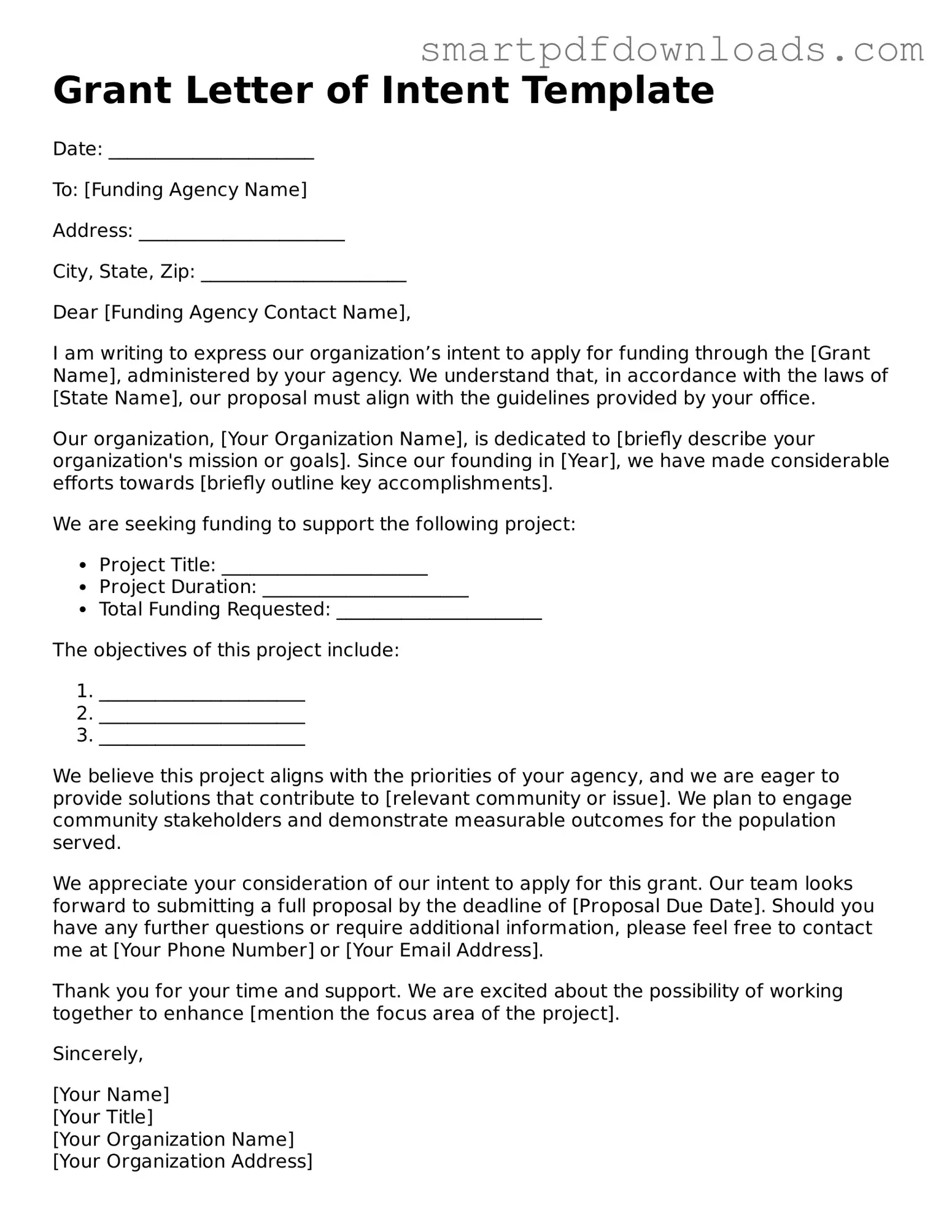Grant Letter of Intent Template
Date: ______________________
To: [Funding Agency Name]
Address: ______________________
City, State, Zip: ______________________
Dear [Funding Agency Contact Name],
I am writing to express our organization’s intent to apply for funding through the [Grant Name], administered by your agency. We understand that, in accordance with the laws of [State Name], our proposal must align with the guidelines provided by your office.
Our organization, [Your Organization Name], is dedicated to [briefly describe your organization's mission or goals]. Since our founding in [Year], we have made considerable efforts towards [briefly outline key accomplishments].
We are seeking funding to support the following project:
- Project Title: ______________________
- Project Duration: ______________________
- Total Funding Requested: ______________________
The objectives of this project include:
- ______________________
- ______________________
- ______________________
We believe this project aligns with the priorities of your agency, and we are eager to provide solutions that contribute to [relevant community or issue]. We plan to engage community stakeholders and demonstrate measurable outcomes for the population served.
We appreciate your consideration of our intent to apply for this grant. Our team looks forward to submitting a full proposal by the deadline of [Proposal Due Date]. Should you have any further questions or require additional information, please feel free to contact me at [Your Phone Number] or [Your Email Address].
Thank you for your time and support. We are excited about the possibility of working together to enhance [mention the focus area of the project].
Sincerely,
[Your Name]
[Your Title]
[Your Organization Name]
[Your Organization Address]
[City, State, Zip]
[Your Phone Number]
[Your Email Address]
